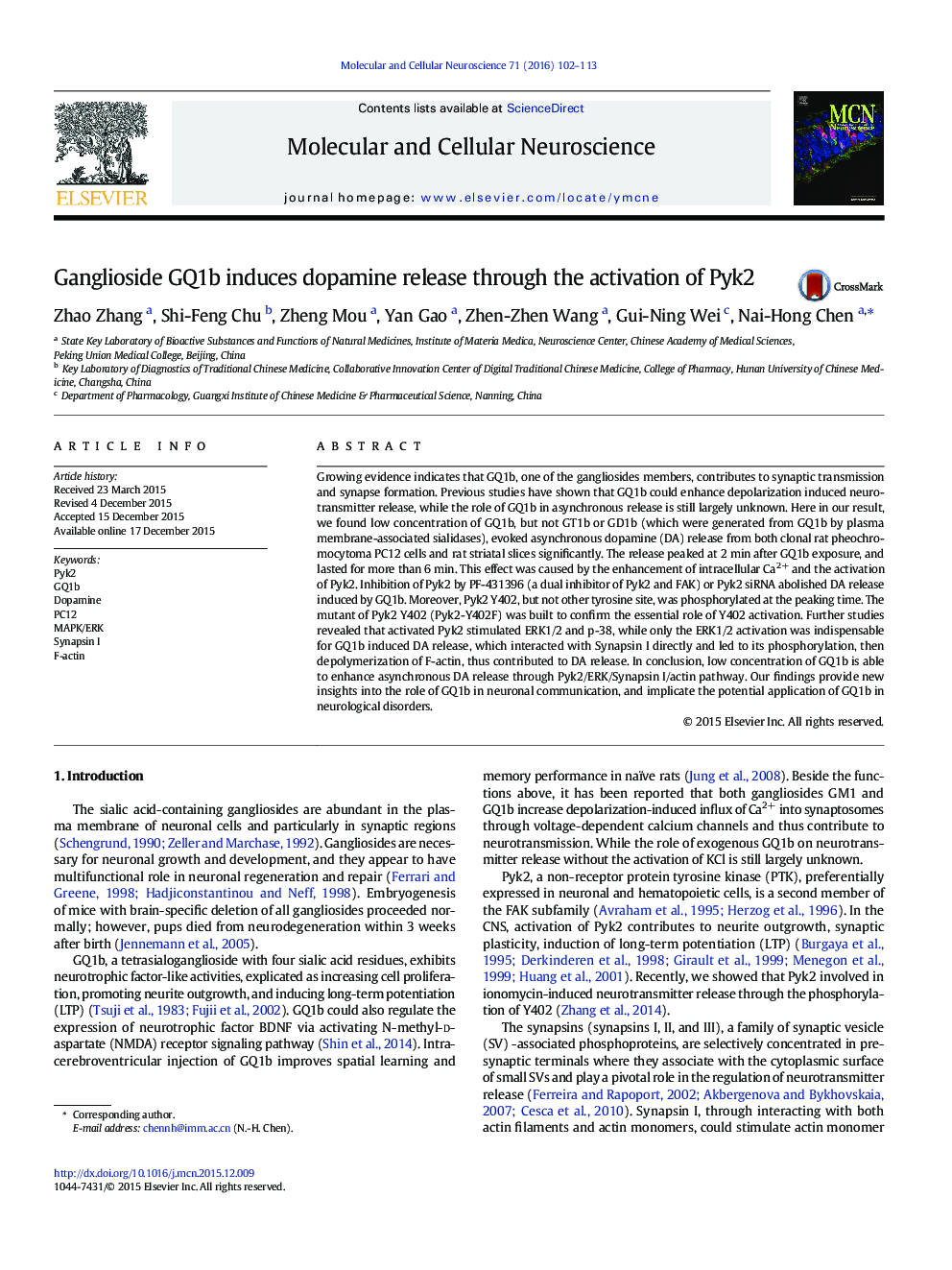| Article ID | Journal | Published Year | Pages | File Type |
|---|---|---|---|---|
| 8478505 | Molecular and Cellular Neuroscience | 2016 | 12 Pages |
Abstract
Growing evidence indicates that GQ1b, one of the gangliosides members, contributes to synaptic transmission and synapse formation. Previous studies have shown that GQ1b could enhance depolarization induced neurotransmitter release, while the role of GQ1b in asynchronous release is still largely unknown. Here in our result, we found low concentration of GQ1b, but not GT1b or GD1b (which were generated from GQ1b by plasma membrane-associated sialidases), evoked asynchronous dopamine (DA) release from both clonal rat pheochromocytoma PC12 cells and rat striatal slices significantly. The release peaked at 2Â min after GQ1b exposure, and lasted for more than 6Â min. This effect was caused by the enhancement of intracellular Ca2+ and the activation of Pyk2. Inhibition of Pyk2 by PF-431396 (a dual inhibitor of Pyk2 and FAK) or Pyk2 siRNA abolished DA release induced by GQ1b. Moreover, Pyk2 Y402, but not other tyrosine site, was phosphorylated at the peaking time. The mutant of Pyk2 Y402 (Pyk2-Y402F) was built to confirm the essential role of Y402 activation. Further studies revealed that activated Pyk2 stimulated ERK1/2 and p-38, while only the ERK1/2 activation was indispensable for GQ1b induced DA release, which interacted with Synapsin I directly and led to its phosphorylation, then depolymerization of F-actin, thus contributed to DA release. In conclusion, low concentration of GQ1b is able to enhance asynchronous DA release through Pyk2/ERK/Synapsin I/actin pathway. Our findings provide new insights into the role of GQ1b in neuronal communication, and implicate the potential application of GQ1b in neurological disorders.
Related Topics
Life Sciences
Biochemistry, Genetics and Molecular Biology
Cell Biology
Authors
Zhao Zhang, Shi-Feng Chu, Zheng Mou, Yan Gao, Zhen-Zhen Wang, Gui-Ning Wei, Nai-Hong Chen,
